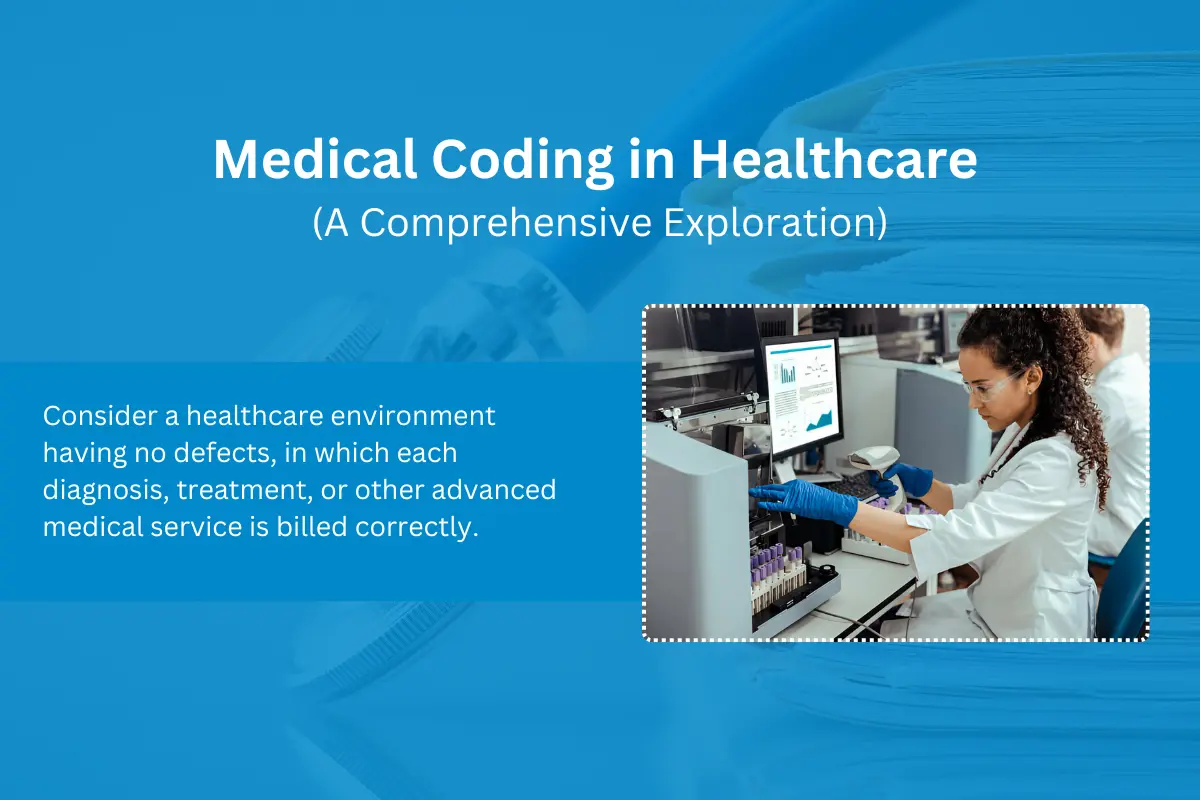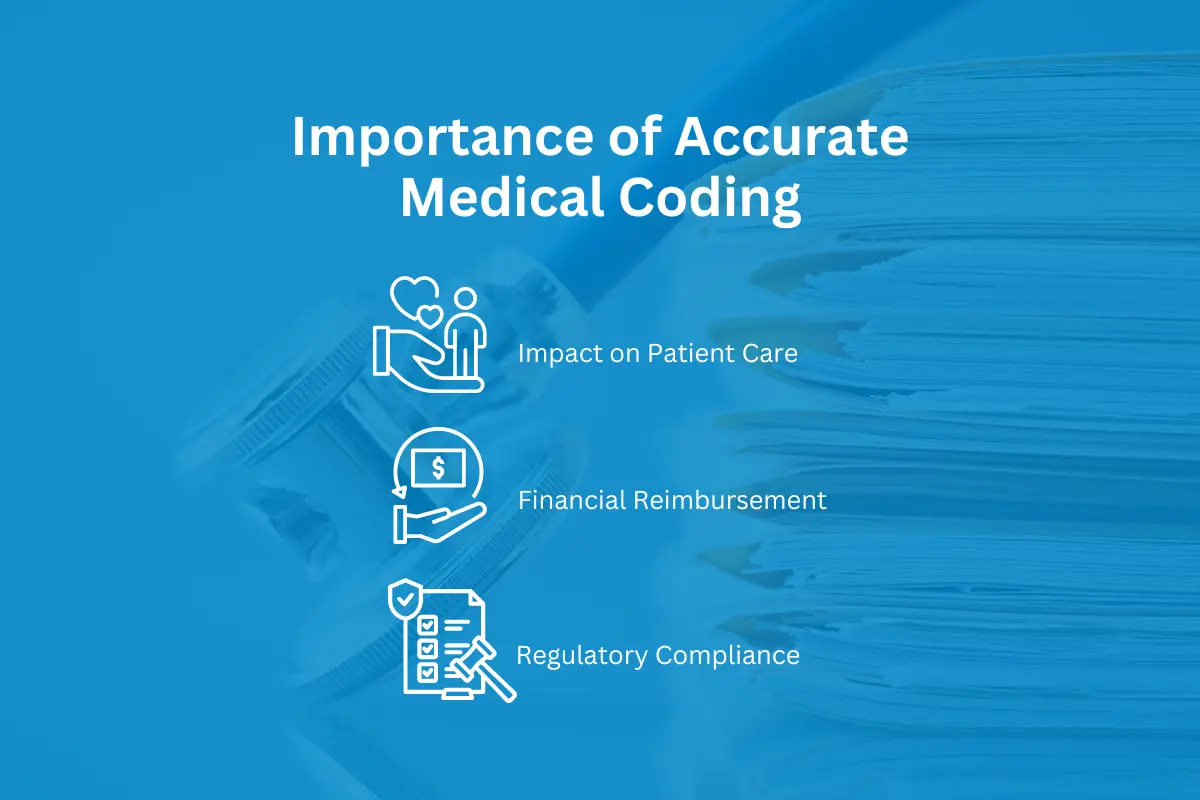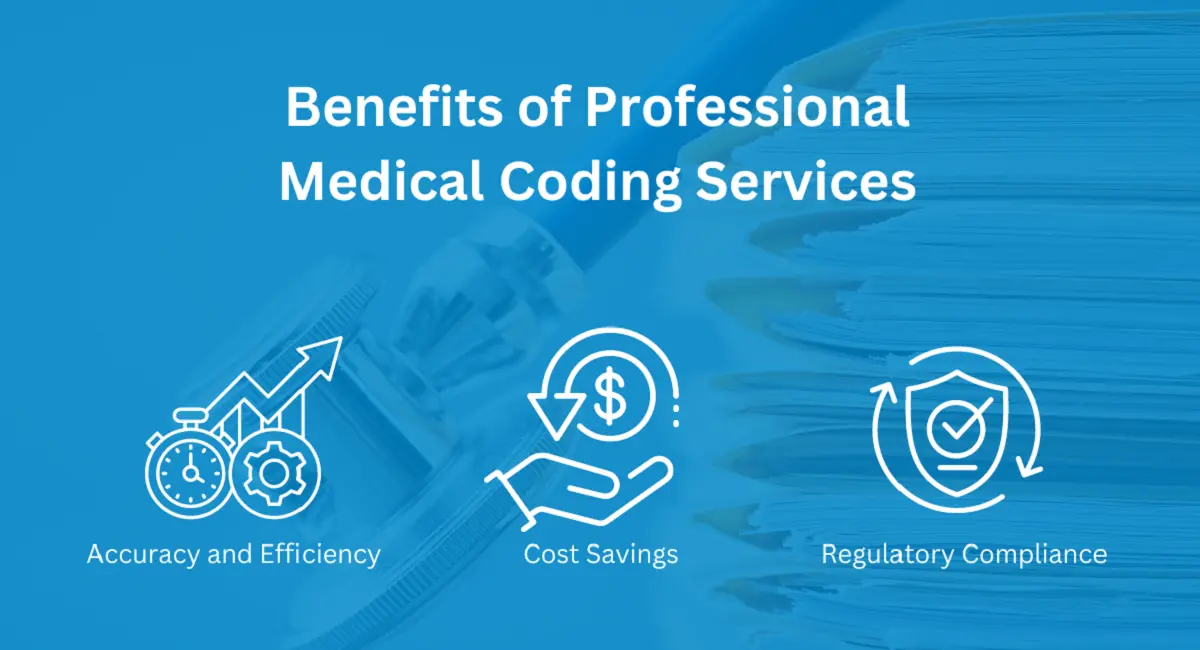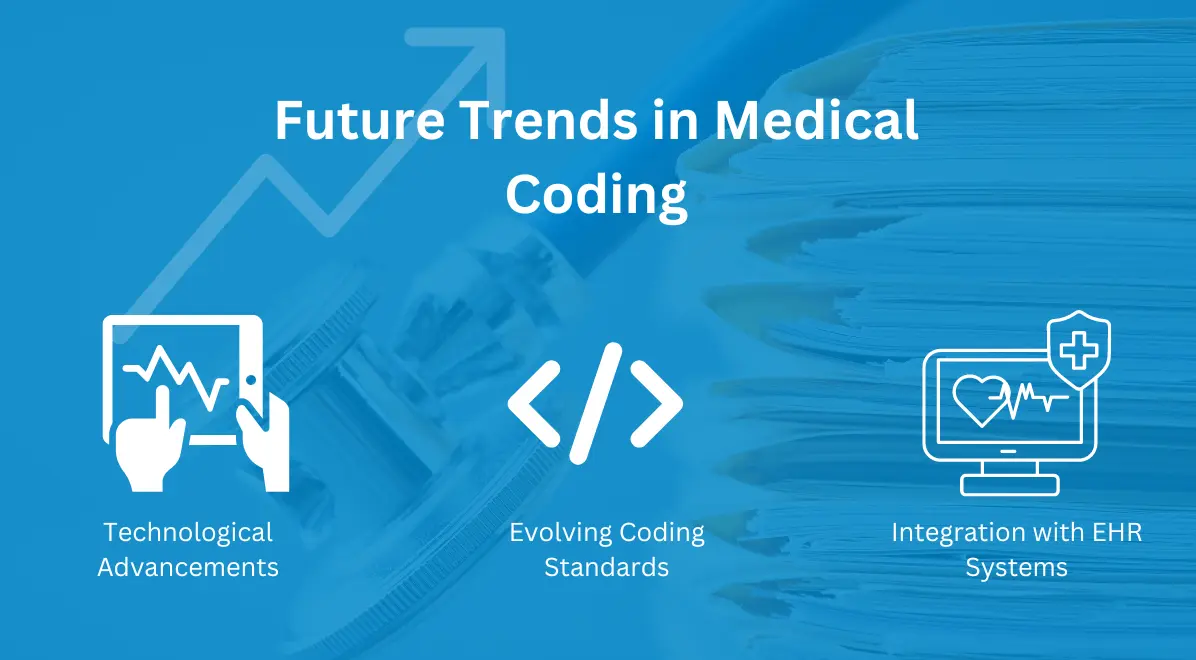Consider a healthcare environment having no defects, in which each diagnosis, treatment, or other advanced medical service is billed correctly.
Understanding Medical Coding
Medical coding involves writing complex information about the healthcare sector in simpler alphanumerical form that is universally recognized in medicine hence enhance the record keeping processes amidst high complexities.
This is because the implementation of codes utilized in the various medical practices can be associated to the efficiency of the billing process within the medical premise and more specifically due to the fact that compliance with regards to the codes is assured.
Informed by the extensive ranges of medical data that may include the EVP’s writings apart from the patients’ test results and diagnostic images, such codes are the foundation for highly efficient and intricate medical management.
Not only do they facilitate the day to day running of the company, but they also assist in patient care due to well-organized and accurately documented medical histories. Learn the benefits of medical coding and how this process can change your healthcare business.
Make sure that all your healthcare activities are correct and compliant as well as done cost-effectively by employing the medical coding services.
Why Medical Coding is Essential in Healthcare?
Medical coding is essential for several reasons:
- Enables charging of clients for services offered in a correct manner.
- Compliance is a critical function that meets the federal requirement of practice strategies.
- Contributes to ensuring that the language used in healthcare to vary within specific standards.
- Helps in the collection of rate data for own and others use in the conduct of research and formulation of policies.
Role of a Medical Coder
A medical coder interprets the documentation into standard codes to make sure the codes are placed correctly when billing for a medical encounter. This entails, compiling data from documents, and attaching codes that belong to the claim after which, the insurance carriers can be paid.
Types of Medical Codes
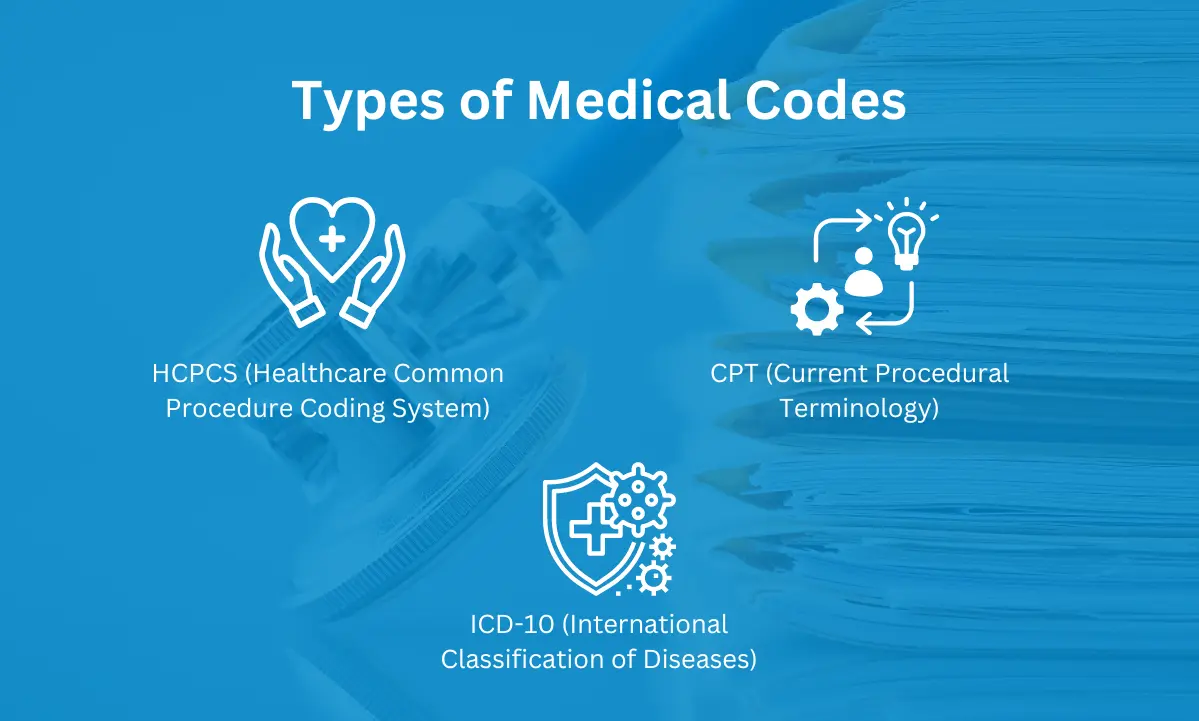
ICD-10 (International Classification of Diseases):
Explanation and examples: ICD-10 is a code that embraces diseases, ailments, functions, injuries, and other medical status of an individual as well as symptoms and complaint that a patient presents, context, and circumstances under which disease or injury was incurred.
Uses in diagnosis coding: ICD 10 codes are worldwide and are specifically applied in determining the diagnosis and purposes of visits to any healthcare.
CPT (Current Procedural Terminology):
Explanation and examples: CPT codes are used for Medicare, surgical, or any kind of diagnostic service. AMA stands for the American Medical Association, and they are codes that are developed by the medical association.
Suppliers utilize them to request procedures and providers to submit services to institutions like certifiers which include physicians and medical insurance plans.
Uses in procedure coding: CPT codes have mainly been designed for reporting medical procedures and services within the sphere of physicians and other healthcare practitioners’ professions.
HCPCS (Healthcare Common Procedure Coding System):
Explanation and examples: HCPCS codes are used for the services and procedures and durable medical equipment that cannot be described by the CPT code.
They are divided into two levels: Level I codes correspond to the CPT codes, and Level II codes are alphanumeric codes that depict other services of the healthcare players other than the physicians including, ambulance services and the prosthetic devices among others.
Uses in medical supplies and services: HCPCS is the billing code set used to bill Medicare and Medicaid for services and durable medical equipment not included in CPT codes.
The Medical Coding Process
Documentation Review:
Importance of thorough documentation: Make sure the documentation part is done accurately and to the best of your knowledge in order to obtain the proper code execution.
Health information includes a physician’s notes, evaluations of diagnostic procedures, and anything else pertaining to health.
Key documents used in coding: Some of the most common documents are the patient history and physical, discharge summary, operation note, and consult note.
Code Assignment:
Selecting appropriate codes: While coding, the coders need to read through the documentation with the purpose of identifying the right codes – diagnosis and procedures.
Ensuring accuracy and compliance: Coding errors and their prevention when it comes to following the guidelines and regulations set in place.
Code Validation:
Internal and external audits: This schedule checklist readjusts the coding in order to be accurate and complete.
Use of coding software: Computer-aided coding software is helpful in coding as it helps with effective coding together with the right codes.
Code Submission:
Preparing codes for billing: Thus, coders also finalize and submit the coded data on their own to either the billing section or insurers.
Integration with medical billing: First is the 6th element of work flow integration, making sure that the coding and billing setup are in synch when it comes to claims.
Importance of Accurate Medical Coding
Impact on Patient Care:
Ensuring accurate treatment and follow-up: To sum up, appropriate coding allows for monitoring of the outcome of the patient’s treatment and ensures that they get the necessary treatment.
Financial Reimbursement:
Role in insurance claims: Coders also use code sets to ensure that healthcare providers receive adequate compensation for services offered by the insurance providers.
Avoiding underpayments and overpayments: Savings incurred from not coding incorrectly.
Regulatory Compliance:
Adhering to healthcare regulations: HIPAA is an example of the regulation that has to be complied with.
Preventing fraud and abuse: If coding is properly done, then all the fraudulent activities that have been executed in the organization can be easily identified.
5. Common Challenges in Medical Coding
Complexity of Codes:
Dealing with numerous codes and updates: Many codes are included and these change quite often which can be quite cumbersome.
Strategies for managing complexity: Therefore, more training for the human capital and the frequent use of coding software to counter this aspect of complexity should be done by institutions.
Coding Errors:
Common types of errors: This may involve upcoding, under coding, and wrong coding.
Impact and prevention methods: Otherwise, mistakes can result in claim rejection and, worse, fines. To avoid such errors, there should be consistent training and auditing.
Staying Current:
Keeping up with coding updates and changes: Coding professionals need to be updated on the changing standards and laws regarding coding.
Importance of continuous education: On this basis, education could be viewed as a continuous process that should be pursued in order to maintain high levels of coding accuracy and minimize the risk of errors.
6. Benefits of Professional Medical Coding Services
Accuracy and Efficiency:
Benefits of professional expertise: Professional coders enhance accuracy and efficiency more than other persons when coding.
Reducing errors and improving workflow: Outsourced work also reduces the incidence of mistakes in processes for many activities related to the professional services field.
Cost Savings:
Financial benefits of outsourcing coding: Outsourcing may decrease some of the general expenditures and enhance the organizational RCM.
Enhancing revenue cycle management: Proper coding makes it possible to issue bills and receive payments in the right time and manner hence increasing the practice’s income.
Regulatory Compliance:
Ensuring adherence to regulations: Legal coders ensure that the coding being done adheres to the set legal ramming and regulations.
Reducing the risk of audits and penalties: When coding, if done in the right way, there is little or no way that the company will face regulatory audits and fines that are out-right drainages of the firm’s cash.
7. Selecting a Medical Coding Service Provider
Key Factors to Consider:
While choosing a provider, ensure that you pick the best by basing it on the experience, reputation and the quality of the coding team.
Questions to Ask Potential Providers:
- What is your experience with our specific medical field?
- How do you ensure coding accuracy and compliance?
- What is your process for handling coding updates and changes?
Evaluating Service Quality and Reliability:
Consider the previous experience of the provider, references from previous clients, and any certifications that the provider may have.
8. Future Trends in Medical Coding
Technological Advancements:
Impact of AI and machine learning: AI and machine learning are starting to make a significant impact in coding by supporting its accuracy and speed.
Automation in coding processes: there is a trend towards more automatic coding systems, which cut a great deal of manual coding work.
Evolving Coding Standards:
Changes in ICD, CPT, and HCPCS codes: Writing standards change over time to accommodate new learning and changing practices in the field of medicine.
Adapting to new healthcare regulations: Programmers can only assume that the new regulation or standard has been issued.
Integration with EHR Systems:
Enhancing interoperability: Another advantage is that integrating with EHR systems helps to work with data and coding for better efficiency.
Streamlining coding and billing processes: EHR integration involves data capture throughout the coding and billing process, and at the end of the process, you find that they are easier to manage.
FAQs
What Kind of Education and Training Do Medical Coders Need?
Medical coders are usually expected to have passed through certification conducted by an accredited body such as AAPC or AHIMA and a fair understanding of some terminologies in medicine and the general human body structure.
How Long Does it Take to Get to Proficiency in Medical Coding?
This takes several months up to a few years, depending on the prior experience and training of the ESP specialist in ESP.
What are the Most Widely Utilized Coding Systems?
Depending on their specialties and the type of treatment centers, they mostly use the ICD-10, CPT, and HCPCS coding systems.
How does Medical coding software help the coders?
Coding software aids its use by recommending potential code lines, flagging errors and enforcing coding standards.
What is the Differences between In-house and Outsourced Coding?
In-house involves coders who are attached to the health care provider while outsourced involves hiring a third party firm.
Recap of Key Points
Medical coding is a crucial factor in the healthcare industry as it involves coding of activities and coding of patients’ data.
To have informed consensus on the above issues, Coders, members who are clinical experts, Administrators, and all other healthcare providers should have reasonable working knowledge about the different coding systems in health and the coding procedure.
Final Thoughts on Why Effective Coding Practices are Essential?
The importance of accurate and timely coding cannot be overemphasized as it affects the quality of the patient’s care, financial solvency and compliance with federal guidelines. It is also imperative to ensure that the clients’ sites meet the current coding regulations and that one could also hire good coding services to enhance these outcomes.


